Judy Fox
Scalable Cosmic AI Inference using Cloud Serverless Computing with FMI
Jan 08, 2025



Abstract:Large-scale astronomical image data processing and prediction is essential for astronomers, providing crucial insights into celestial objects, the universe's history, and its evolution. While modern deep learning models offer high predictive accuracy, they often demand substantial computational resources, making them resource-intensive and limiting accessibility. We introduce the Cloud-based Astronomy Inference (CAI) framework to address these challenges. This scalable solution integrates pre-trained foundation models with serverless cloud infrastructure through a Function-as-a-Service (FaaS) Message Interface (FMI). CAI enables efficient and scalable inference on astronomical images without extensive hardware. Using a foundation model for redshift prediction as a case study, our extensive experiments cover user devices, HPC (High-Performance Computing) servers, and Cloud. CAI's significant scalability improvement on large data sizes provides an accessible and effective tool for the astronomy community. The code is accessible at https://github.com/UVA-MLSys/AI-for-Astronomy.
WinTSR: A Windowed Temporal Saliency Rescaling Method for Interpreting Time Series Deep Learning Models
Dec 05, 2024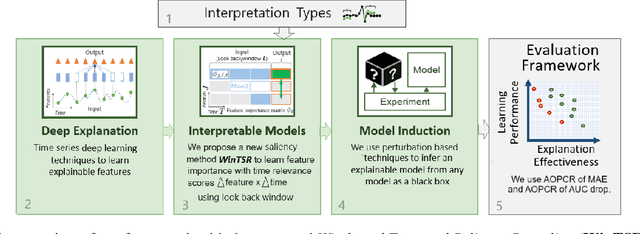


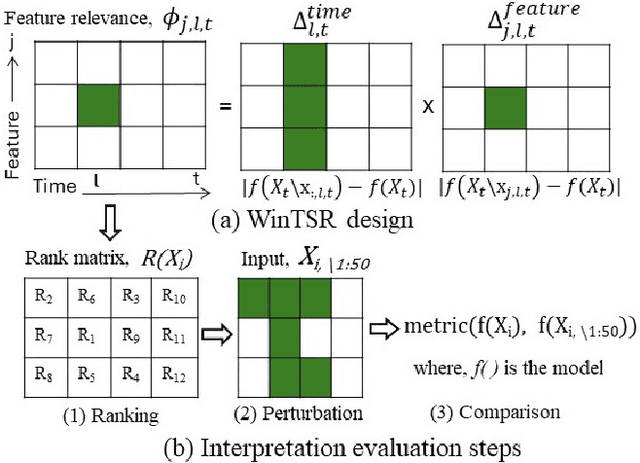
Abstract:Interpreting complex time series forecasting models is challenging due to the temporal dependencies between time steps and the dynamic relevance of input features over time. Existing interpretation methods are limited by focusing mostly on classification tasks, evaluating using custom baseline models instead of the latest time series models, using simple synthetic datasets, and requiring training another model. We introduce a novel interpretation method called Windowed Temporal Saliency Rescaling (WinTSR) addressing these limitations. WinTSR explicitly captures temporal dependencies among the past time steps and efficiently scales the feature importance with this time importance. We benchmark WinTSR against 10 recent interpretation techniques with 5 state-of-the-art deep-learning models of different architectures, including a time series foundation model. We use 3 real-world datasets for both time-series classification and regression. Our comprehensive analysis shows that WinTSR significantly outranks the other local interpretation methods in overall performance. Finally, we provide a novel and open-source framework to interpret the latest time series transformers and foundation models.
Does Differential Privacy Impact Bias in Pretrained NLP Models?
Oct 24, 2024



Abstract:Differential privacy (DP) is applied when fine-tuning pre-trained large language models (LLMs) to limit leakage of training examples. While most DP research has focused on improving a model's privacy-utility tradeoff, some find that DP can be unfair to or biased against underrepresented groups. In this work, we show the impact of DP on bias in LLMs through empirical analysis. Differentially private training can increase the model bias against protected groups w.r.t AUC-based bias metrics. DP makes it more difficult for the model to differentiate between the positive and negative examples from the protected groups and other groups in the rest of the population. Our results also show that the impact of DP on bias is not only affected by the privacy protection level but also the underlying distribution of the dataset.
Large Language Models for Financial Aid in Financial Time-series Forecasting
Oct 24, 2024Abstract:Considering the difficulty of financial time series forecasting in financial aid, much of the current research focuses on leveraging big data analytics in financial services. One modern approach is to utilize "predictive analysis", analogous to forecasting financial trends. However, many of these time series data in Financial Aid (FA) pose unique challenges due to limited historical datasets and high dimensional financial information, which hinder the development of effective predictive models that balance accuracy with efficient runtime and memory usage. Pre-trained foundation models are employed to address these challenging tasks. We use state-of-the-art time series models including pre-trained LLMs (GPT-2 as the backbone), transformers, and linear models to demonstrate their ability to outperform traditional approaches, even with minimal ("few-shot") or no fine-tuning ("zero-shot"). Our benchmark study, which includes financial aid with seven other time series tasks, shows the potential of using LLMs for scarce financial datasets.
Interpreting Time Series Transformer Models and Sensitivity Analysis of Population Age Groups to COVID-19 Infections
Jan 26, 2024Abstract:Interpreting deep learning time series models is crucial in understanding the model's behavior and learning patterns from raw data for real-time decision-making. However, the complexity inherent in transformer-based time series models poses challenges in explaining the impact of individual features on predictions. In this study, we leverage recent local interpretation methods to interpret state-of-the-art time series models. To use real-world datasets, we collected three years of daily case data for 3,142 US counties. Firstly, we compare six transformer-based models and choose the best prediction model for COVID-19 infection. Using 13 input features from the last two weeks, we can predict the cases for the next two weeks. Secondly, we present an innovative way to evaluate the prediction sensitivity to 8 population age groups over highly dynamic multivariate infection data. Thirdly, we compare our proposed perturbation-based interpretation method with related work, including a total of eight local interpretation methods. Finally, we apply our framework to traffic and electricity datasets, demonstrating that our approach is generic and can be applied to other time-series domains.
Fairness and Privacy in Federated Learning and Their Implications in Healthcare
Aug 15, 2023

Abstract:Currently, many contexts exist where distributed learning is difficult or otherwise constrained by security and communication limitations. One common domain where this is a consideration is in Healthcare where data is often governed by data-use-ordinances like HIPAA. On the other hand, larger sample sizes and shared data models are necessary to allow models to better generalize on account of the potential for more variability and balancing underrepresented classes. Federated learning is a type of distributed learning model that allows data to be trained in a decentralized manner. This, in turn, addresses data security, privacy, and vulnerability considerations as data itself is not shared across a given learning network nodes. Three main challenges to federated learning include node data is not independent and identically distributed (iid), clients requiring high levels of communication overhead between peers, and there is the heterogeneity of different clients within a network with respect to dataset bias and size. As the field has grown, the notion of fairness in federated learning has also been introduced through novel implementations. Fairness approaches differ from the standard form of federated learning and also have distinct challenges and considerations for the healthcare domain. This paper endeavors to outline the typical lifecycle of fair federated learning in research as well as provide an updated taxonomy to account for the current state of fairness in implementations. Lastly, this paper provides added insight into the implications and challenges of implementing and supporting fairness in federated learning in the healthcare domain.
Population Age Group Sensitivity for COVID-19 Infections with Deep Learning
Jul 03, 2023



Abstract:The COVID-19 pandemic has created unprecedented challenges for governments and healthcare systems worldwide, highlighting the critical importance of understanding the factors that contribute to virus transmission. This study aimed to identify the most influential age groups in COVID-19 infection rates at the US county level using the Modified Morris Method and deep learning for time series. Our approach involved training the state-of-the-art time-series model Temporal Fusion Transformer on different age groups as a static feature and the population vaccination status as the dynamic feature. We analyzed the impact of those age groups on COVID-19 infection rates by perturbing individual input features and ranked them based on their Morris sensitivity scores, which quantify their contribution to COVID-19 transmission rates. The findings are verified using ground truth data from the CDC and US Census, which provide the true infection rates for each age group. The results suggest that young adults were the most influential age group in COVID-19 transmission at the county level between March 1, 2020, and November 27, 2021. Using these results can inform public health policies and interventions, such as targeted vaccination strategies, to better control the spread of the virus. Our approach demonstrates the utility of feature sensitivity analysis in identifying critical factors contributing to COVID-19 transmission and can be applied in other public health domains.
Interpreting County Level COVID-19 Infection and Feature Sensitivity using Deep Learning Time Series Models
Oct 06, 2022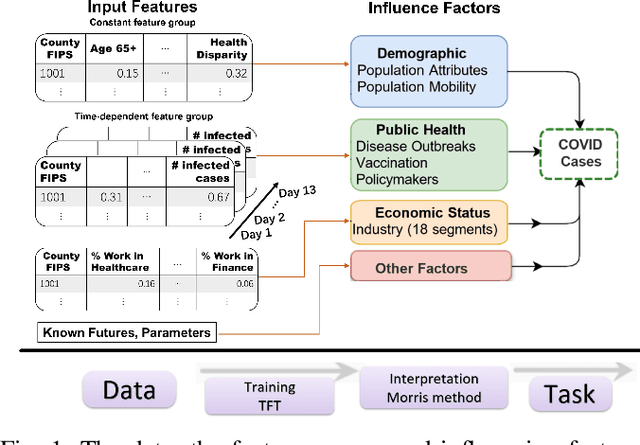
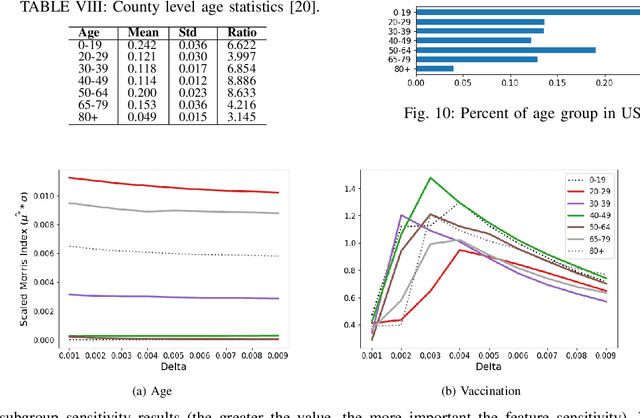
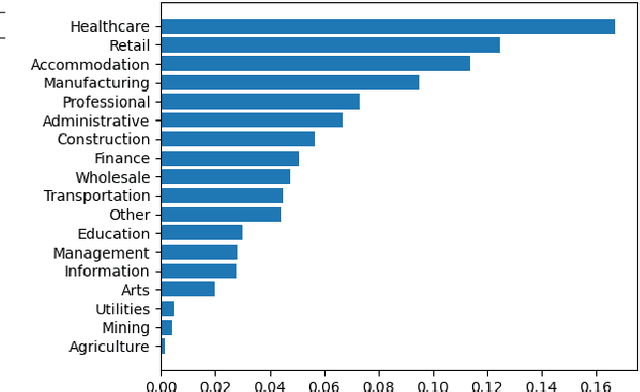
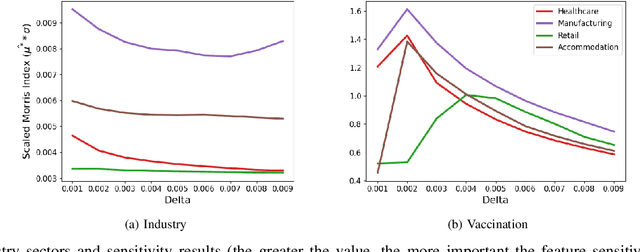
Abstract:Interpretable machine learning plays a key role in healthcare because it is challenging in understanding feature importance in deep learning model predictions. We propose a novel framework that uses deep learning to study feature sensitivity for model predictions. This work combines sensitivity analysis with heterogeneous time-series deep learning model prediction, which corresponds to the interpretations of spatio-temporal features. We forecast county-level COVID-19 infection using the Temporal Fusion Transformer. We then use the sensitivity analysis extending Morris Method to see how sensitive the outputs are with respect to perturbation to our static and dynamic input features. The significance of the work is grounded in a real-world COVID-19 infection prediction with highly non-stationary, finely granular, and heterogeneous data. 1) Our model can capture the detailed daily changes of temporal and spatial model behaviors and achieves high prediction performance compared to a PyTorch baseline. 2) By analyzing the Morris sensitivity indices and attention patterns, we decipher the meaning of feature importance with observational population and dynamic model changes. 3) We have collected 2.5 years of socioeconomic and health features over 3142 US counties, such as observed cases and deaths, and a number of static (age distribution, health disparity, and industry) and dynamic features (vaccination, disease spread, transmissible cases, and social distancing). Using the proposed framework, we conduct extensive experiments and show our model can learn complex interactions and perform predictions for daily infection at the county level. Being able to model the disease infection with a hybrid prediction and description accuracy measurement with Morris index at the county level is a central idea that sheds light on individual feature interpretation via sensitivity analysis.
 Add to Chrome
Add to Chrome Add to Firefox
Add to Firefox Add to Edge
Add to Edge